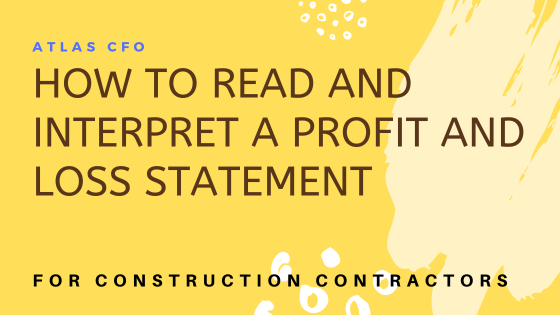As a construction business owner, deciphering financial statements is crucial for understanding the overall health and profitability of your business. One such important financial statement is the Profit and Loss Statement (also known as an Income Statement). This article aims to provide you with a step-by-step guide on how to read and interpret a Profit and Loss Statement, enabling you to make informed financial decisions and improve the financial performance of your construction company.
1. Understanding the Basics:
Your Profit and Loss Statement provides a snapshot of your business’s revenue, job costs, overhead expenses, and net profit (or loss) over a specific period. It summarizes the financial performance of your construction business, allowing you to gauge if you are profitable or need to make adjustments.
2. Revenue and Sales:
The top section of your Profit and Loss Statement focuses on revenue and sales. Here, you’ll find information on the total revenue generated by your construction projects during the period. This section will also contain the under/over billing adjustment.
3. Direct Job Costs/Cost of Goods Sold (COGS):
The COGS or Direct Job Costs section represents the expenses directly associated with your construction projects. This includes materials, labor costs, subcontractor expenses, and equipment rentals. Tracking your COGS helps you assess the profitability of individual projects and make informed decisions about pricing, sourcing materials, and managing labor costs.
4. Gross Profit:
Gross profit is calculated by subtracting your COGS from your revenue. It represents the profit generated from your construction operations before accounting for overhead expenses. This figure is vital for evaluating the efficiency and profitability of your construction projects.
5. Operating Expenses:
Operating expenses, also known as overhead expenses, are the costs associated with running your construction business apart from direct project costs. Examples include utilities, vehicle expenses, insurance, salaries, marketing, and administrative costs. Reviewing these expenses helps identify areas where cost-saving measures can be implemented or where you may be overspending.
6. Operating Income (or Loss):
Operating income is derived by subtracting your operating expenses from your gross profit. It reflects the profitability of your core construction operations. A positive operating income shows that your business is generating profits before considering non-operating activities, while a negative figure indicates a loss.
7. Other Income and Expenses:
This section includes any non-operating income or expenses, such as interest income, interest expenses, gains or losses on the sale of assets, or rental income. Understanding these items helps you better analyze your overall financial performance and identify areas for improvement.
8. Net Income (or Loss):
Net income is the final figure on the Profit and Loss Statement, calculated by subtracting your other income and expenses from your operating income. This represents the profit (or loss) after considering all revenue and expenses. A positive net income indicates profitability, while a negative figure signifies a loss.
Conclusion:
Effectively reading and interpreting your Profit and Loss Statement ensures that you have the financial knowledge necessary to make informed decisions and improve the profitability of your construction business. By understanding revenue and percent-complete adjustments, project costs, overhead expenses, and the final bottom-line, you can identify areas for improvement, implement cost-saving strategies, and strengthen your financial position.

